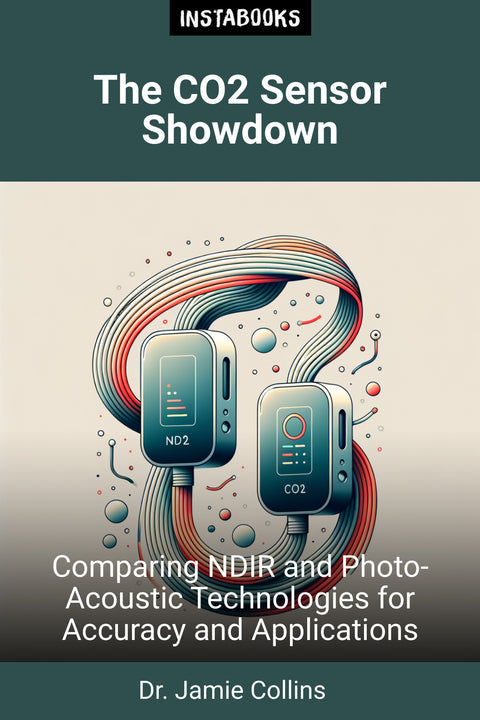
The CO2 Sensor Showdown
Comparing NDIR and Photo-Acoustic Technologies for Accuracy and Applications
Included:
✓ 200+ Page AI-Generated Book
✓ ePub eBook File — read on Kindle & Apple Books
✓ PDF Print File (Easy Printing)
✓ Word DOCX File (Easy Editing)
✓ Hi-Res Print-Ready Book Cover (No Logo Watermark)
✓ Full Commercial Use Rights — keep 100% of royalties
✓ Publish under your own Author Name
✓ Sell on Amazon KDP, IngramSpark, Lulu, Blurb & Gumroad to millions of readers worldwide
Explore the Future of CO2 Sensing Technology
Dive into a comprehensive guide that unravels the complexities of low-cost CO2 sensors, focusing on the cutting-edge NDIR and Photo-Acoustic technologies. This book offers a thorough exploration of the working principles of these sensors, highlighting their operational mechanics, advantages, and the challenges each technology presents.
In-Depth Comparisons and Analysis
With meticulously researched content, this book delves into the accuracy and stability of these sensors, providing side-by-side comparisons to help you understand their strengths and weaknesses. Discover how NDIR sensors, known for their superior accuracy and low drift, stack up against the compact and potentially revolutionary Photo-Acoustic sensors.
Real-World Applications
Gain insights into practical applications of both NDIR and Photo-Acoustic sensors in real-world scenarios. Whether it's maintaining optimal indoor air quality or integrating sensors into portable devices, this guide offers vivid examples and case studies to illustrate the versatility and applicability of these technologies.
Who Should Read This Book?
This book is tailored for engineers, environmental scientists, technology enthusiasts, and anyone interested in understanding the nuances of CO2 sensing. It's a must-read for those seeking to make informed decisions about sensor technologies for various environmental and industrial applications.
Embark on a journey through the ever-evolving landscape of CO2 sensors with this informative and engaging book, and equip yourself with the knowledge needed to choose the best technology for your needs.
Table of Contents
1. Understanding CO2 Sensors- Introduction to CO2 Sensing
- Historical Development
- The Importance of Monitoring CO2
2. Principles of NDIR Technology
- Operational Mechanics
- Technical Advantages
- Challenges and Limitations
3. Exploring Photo-Acoustic Sensors
- How They Work
- Key Benefits
- Environmental Sensitivity
4. Comparing Accuracy and Stability
- NDIR Sensor Accuracy
- Photo-Acoustic Precision
- Long-Term Stability Analysis
5. Advantages of NDIR Sensors
- High Accuracy
- Low Drift
- Ease of Calibration
6. Strengths of Photo-Acoustic Sensors
- Compact Design
- Future Potential
- Integration in Devices
7. Practical Applications of CO2 Sensors
- Indoor Air Quality
- Environmental Monitoring
- Industrial Uses
8. Innovations in Sensor Technologies
- Recent Advancements
- Research Directions
- Potential Breakthroughs
9. Choosing the Right Sensor
- Household Needs
- Commercial Solutions
- Industrial Requirements
10. Case Studies and Real-World Examples
- Residential Systems
- Commercial Installations
- Portable Devices
11. Future Outlook on CO2 Sensing
- Emerging Trends
- Global Implications
- Forecast for Carbon Monitoring
12. Conclusion: NDIR vs. Photo-Acoustic
- Summarizing Key Points
- Final Thoughts
- Further Reading Suggestions
Target Audience
This book is aimed at engineers, environmental scientists, technology enthusiasts, and anyone interested in the intricacies of CO2 sensing and environmental monitoring.
Key Takeaways
- Understand the working principles of NDIR and Photo-Acoustic CO2 sensors.
- Compare the accuracy and stability of both technologies.
- Explore real-world applications in various scenarios.
- Gain insights into the advantages and disadvantages of each sensor type.
- Learn about the latest advancements and future directions in CO2 sensing.
